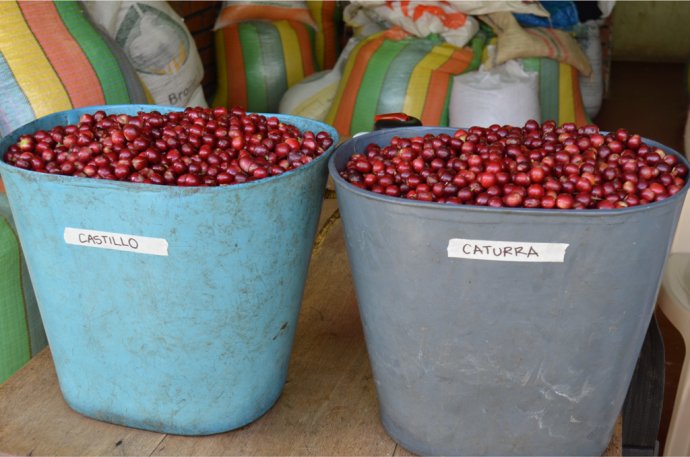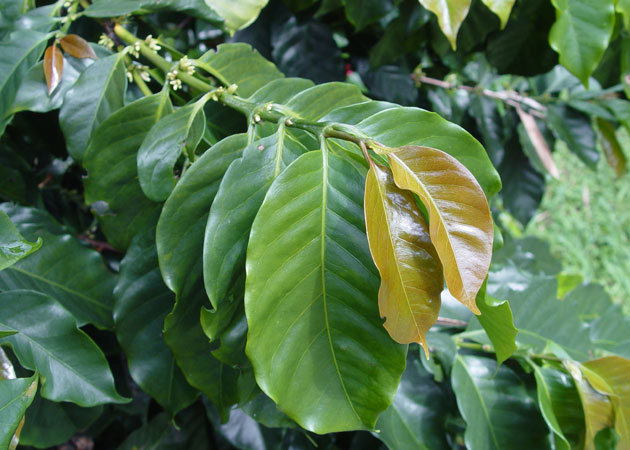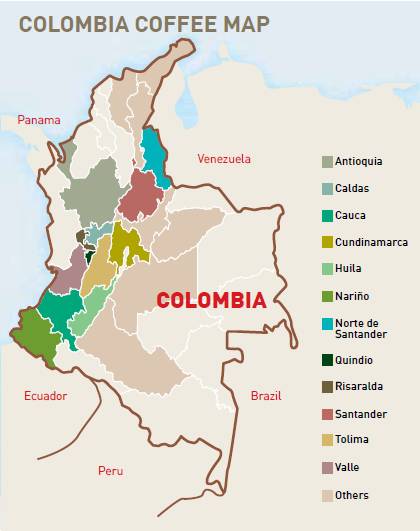Arabica coffee varieties: Castillo Castillo Introduction
For professional baristas, please follow the coffee workshop (Wechat official account cafe_style)
Coffee varieties: introduction to Castillo Castillo
Castillo, or castillo variety, or castillo cultivar, is a coffee variety developed in 2005 by the Colombian Coffee Research Institute to enhance plant disease resistance. It is currently the main cultivated variety in Colombia.
The genetic source of castillo
Castillo is the result of five generations of cross breeding between Timor and caturra.
Timor is the result of natural hybridization between Arabica and Robusta.
Caturra is the result of natural mutation of bourbon species.
Timor plants are tall and resistant to leaf rust.
The plant of Caturra is short and the yield is higher than that of tin pickup and bourbon, which inherits the high quality flavor of bourbon, the plant spacing is small, and the plant density per unit area is denser. Susceptible to leaf rust.
Castillo inherited the dwarf plant and high yield of caturra, as well as the leaf rust resistance gene of Timor.
Castillo is the result of research and development of disease-resistant varieties pursued by cenicafe.

Naming and Research and Development of castillo
Castillo, developed by Cenicafe, named after the researcher Jaime Castillo, the patent belongs to Cenicafe.
The Coffee Research Center (Colombia research institute center) was established in 1938 and operated by the famous Colombian coffee organization FNC (Union of Coffee growers). It is mainly engaged in coffee production, disease resistance and so on. The history of FNC can be traced back to 1927. For more information, please refer to the blog article "narino, a boutique coffee producing area".
In the last 50 years of the last century, caturra gradually replaced the ancient Colombian coffee variety and became the main cultivated variety in Colombia. In 1982, the Coffee Research Center released Colombia, and in 1983, leaf rust was first discovered in Colombia, and Colombian species with disease resistance were promoted.
In 2005, based on the research of Colombia species, cenicafe launched castillo species. FNC strongly supported the application of new products and promoted the cultivation of new products through a package of agricultural and financial policies. Just a decade later, by 2015, articles had pointed out that catillo accounted for 40% of all coffee acreage in Colombia. Among them, the outbreak of leaf rust from 2008 to 2010 also contributed to the popularity of castillo.

Castillo vs. Caturra
The vigorous promotion of Castillo has caused great controversy between coffee farmers and roasters, often focusing on the Robusta gene of the new castillo and their in-cup performance compared with caturra.
In December 2014 and January 2015, world-renowned coffee organizations and research institutions, together with well-known coffee companies, conducted a sensory test on the cup test performance of castillo and caturra. The analysis was conducted on 25 farms in the Narinho region of Colombia, which provided castillo and caturra. As for the test results, generally speaking, castillo performed well in the cup.
Important Notice :
前街咖啡 FrontStreet Coffee has moved to new addredd:
FrontStreet Coffee Address: 315,Donghua East Road,GuangZhou
Tel:020 38364473
- Prev

What does NINETY PLUS 90 + company introduce to be 90percent? What are the varieties of 90 +?
What does INETY PLUS 90 + company introduce to be 90percent? What are the varieties of 90 +? 2170NINETY PLUS introduced Ninety plus as an American coffee company with a unique style. Founded by Joseph Brodsky in 2004, it began to look for wild Gesha (Geisha) varieties in Ethiopia, during which a wild variety, Nin, was found in Beloya and Aricha areas.
- Next

About the Colombian FNC National Federation of Coffee Growers of Colombia
Professional barista exchanges please follow the coffee workshop (Wechat official account cafe_style) about the greatest purpose of Colombian FNC FNC is to be the spokesman of Colombian coffee, promising that as long as coffee farmers are willing to sell coffee, FNC is willing to buy, FNC not only do Colombian coffee international ambassador to do coffee marketing in the international market, successfully created Uncle Juan
Related
- Detailed explanation of Jadeite planting Land in Panamanian Jadeite Manor introduction to the grading system of Jadeite competitive bidding, Red bid, Green bid and Rose Summer
- Story of Coffee planting in Brenka region of Costa Rica Stonehenge Manor anaerobic heavy honey treatment of flavor mouth
- What's on the barrel of Blue Mountain Coffee beans?
- Can American coffee also pull flowers? How to use hot American style to pull out a good-looking pattern?
- Can you make a cold extract with coffee beans? What is the right proportion for cold-extracted coffee formula?
- Indonesian PWN Gold Mandrine Coffee Origin Features Flavor How to Chong? Mandolin coffee is American.
- A brief introduction to the flavor characteristics of Brazilian yellow bourbon coffee beans
- What is the effect of different water quality on the flavor of cold-extracted coffee? What kind of water is best for brewing coffee?
- Why do you think of Rose Summer whenever you mention Panamanian coffee?
- Introduction to the characteristics of authentic blue mountain coffee bean producing areas? What is the CIB Coffee Authority in Jamaica?

